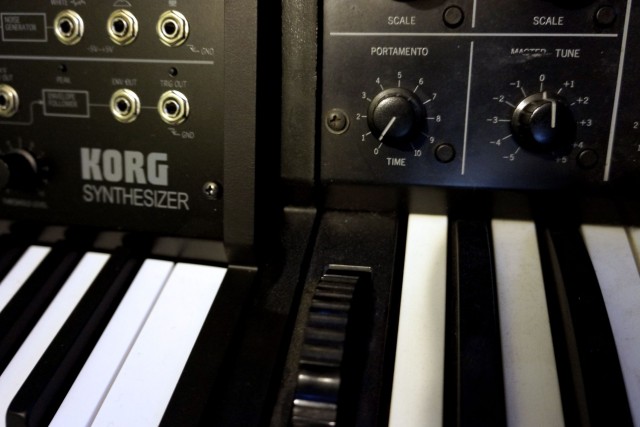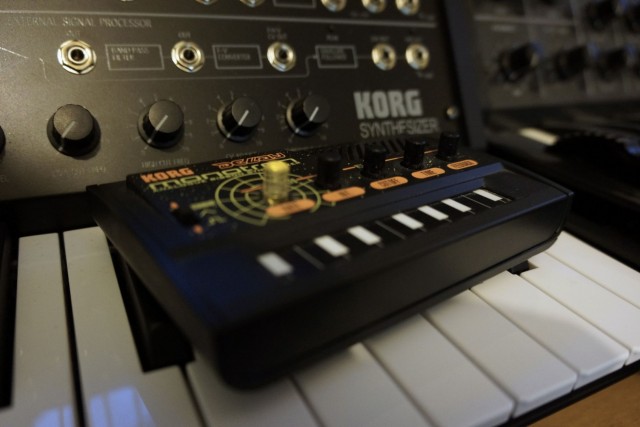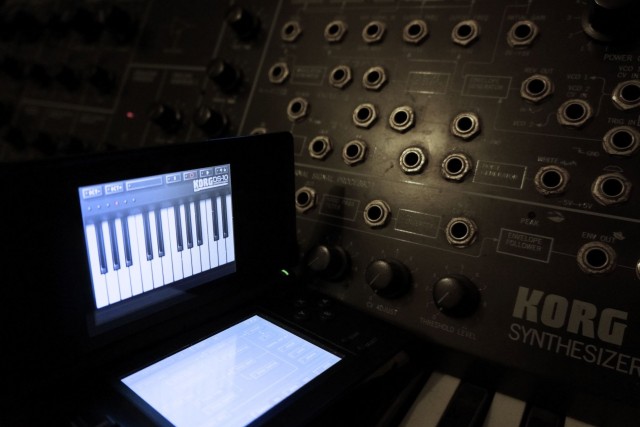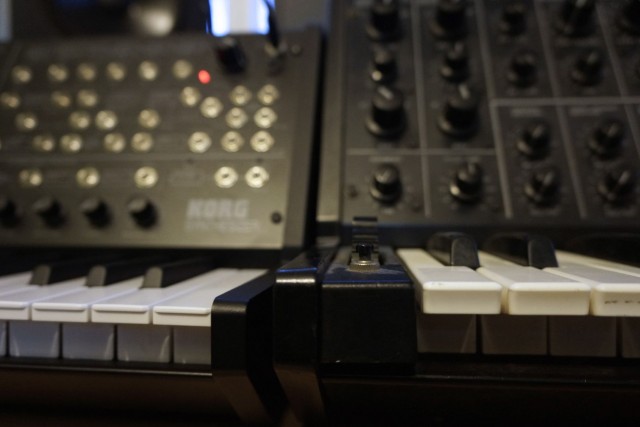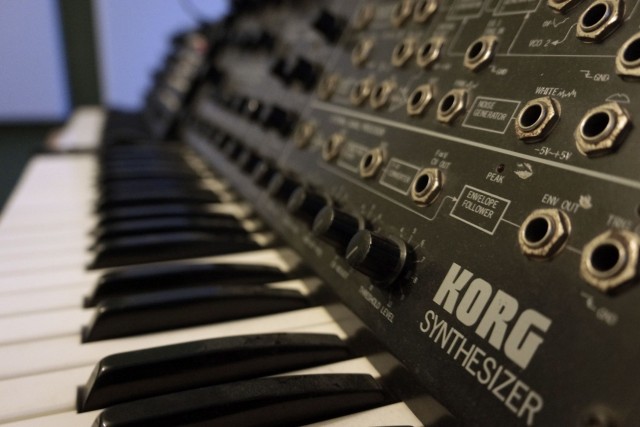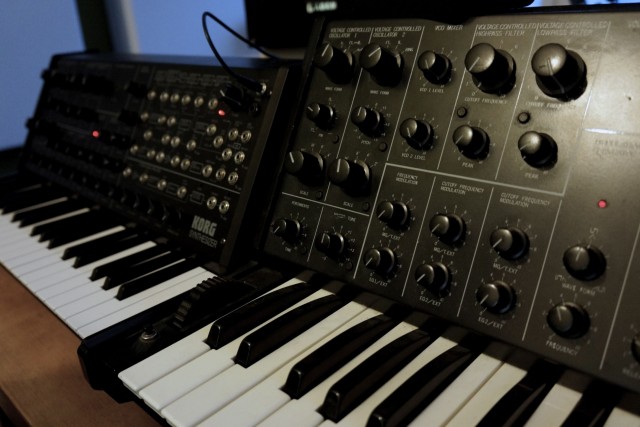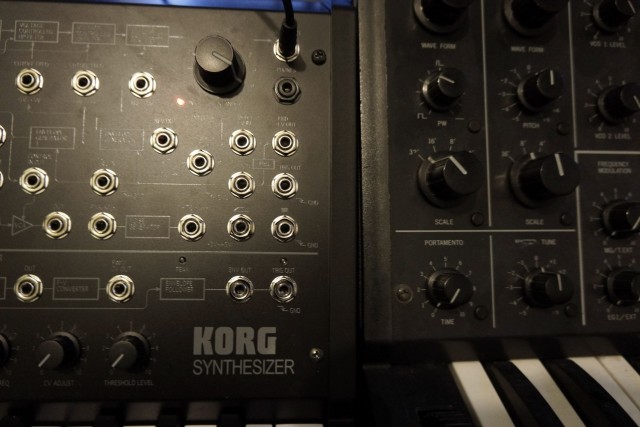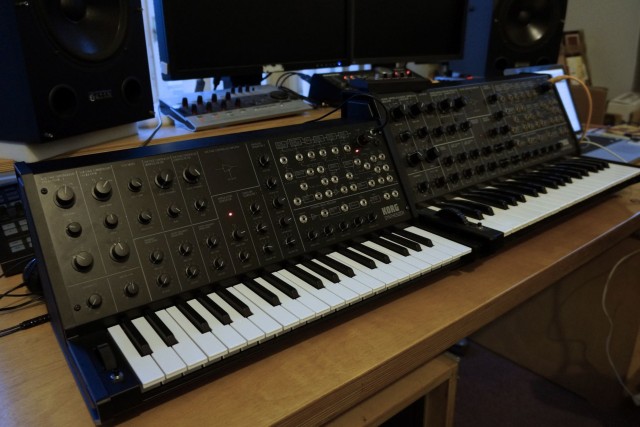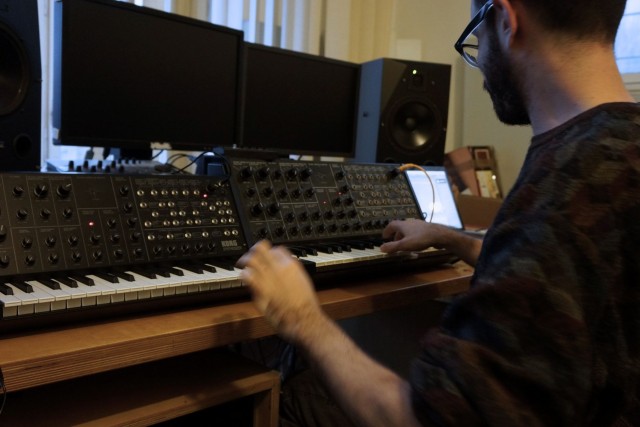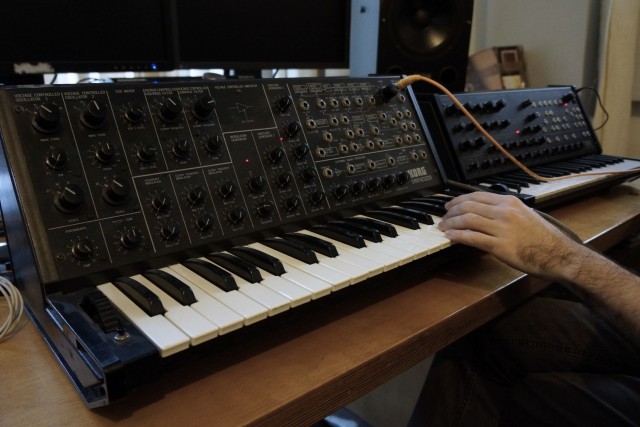It’s the news collectors of vintage synths on eBay probably didn’t want to hear. For $599, Korg has made a new MS-20 that the company says has “perfectly reproduced its circuitry” for an “authentic” sound.
You can read our full review of the MS-20 mini, and watch a video, whether or not you’ve ever used the original. But if you are curious how a new MS-20 mini stacks up against the vintage MS-20, we hauled both into the studio to try them out.
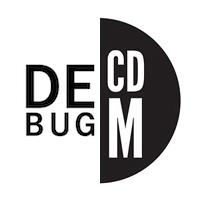 And as the 1980 model met the exclusive 2013 review unit, CDM met Berlin-based, German-language electronic music publication DE:BUG. Benjamin Weiss of that publication (and Engadget.de) spent the afternoon testing with me and joins us for his thoughts. Have a listen – and yes, we do enjoy talking about this stuff, so you get our genuine, unscripted thoughts.
And as the 1980 model met the exclusive 2013 review unit, CDM met Berlin-based, German-language electronic music publication DE:BUG. Benjamin Weiss of that publication (and Engadget.de) spent the afternoon testing with me and joins us for his thoughts. Have a listen – and yes, we do enjoy talking about this stuff, so you get our genuine, unscripted thoughts.
In the examples that include both the MS-20 and the MS-20 mini, the order is as follows:
Both together (if applicable), then our recently-restored 1980-vintage MS-20, then the new mini.
Now that USA radio program Car Talk is no longer in production, enjoy Sine & Square:
(I should add, Benjamin is also producer Nerk, and half of the legendary Tok Tok, on Kompakt, Klang, V-Records. Like the MS-20 mini, I’m the upstart newcomer, and relatively smaller in physical size. However, both Benjamin and I do MIDI.)
The verdict: the original is … worse, actually. (And that’s even before you get to its high cost, bigger size, and lack of MIDI.) Sorry, purists; feel free to throw things at me.
Clarification: I recognize that it’s not always clear what we’re demonstrating with these sound clips. We spent a significant amount of time comparing the two instruments. My feeling was that the differences were subtle enough (apart from reliability issues on the older unit), that for practical musical purposes, while actually playing and producing music, you would be happy with either from a sound standpoint. The examples you hear were chosen specifically because they pushed timing and filter performance to the edge – where you would begin to hear actual differences between the sounds. Even in these examples, however, I find the differences reasonably subtle, and these are edge cases.
Additionally, what I hoped to illustrate in the issue of tuning reliability problems on one of the oscillators was the fact that older units very often expose reliability and quality differences, and require a higher degree of maintenance. Sometimes, these characteristics can even be desirable, though very often they can become a challenge to owners not willing to commit to doing some upkeep for optimal performance. It’s worth pointing out the obvious as conventional wisdom sometimes dictates that older is necessarily better, and here, the remake means a lower cost of ownership and fewer reliability concerns. It was still a pleasure to work with the older unit, but since this is a comparison, that’s only fair.
A/B tests are actually rather hard to hear as even the toughest tests we could produce got astoundingly-similar results. The differences clearly came from the age of the vintage model. One of the oscillators was gradually but constantly drifting out of tune and the keyboard felt fairly rough. And this is on a model in very good internal condition, coming off a recent service. I did find that setting knobs in identical positions on envelopes and other parameters produced slightly different results, but I would again attribute this to age and other variations; if you ignored the exact knob position and listened to the sound, matching the two was easy.
In fact, I even tried two-handed jams on the mini and original model, and got them paired closely enough to produce two-note polyphony. (Those were — uh, too embarrassing to release. It turns out I’m not actually Wendy Carlos, after all. Bach does sound good on the Korgs, however.)
Mostly, what both MS-20 mini and MS-20 demonstrated was how distinctive this design is – in old and new iterations. The filter sounds simply spectacular, as heard recently in Korg’s monotron and monotribe. The instrument can produce floor-rattling-good bass, thick, rich sounds, and wild, experimental timbres. Any difference between the mini and original MS-20 is incidental, but the difference between the MS-20 and other synths is something else. It’s still a really terrific instrument.
Of course, Korg will now probably have to move on, having released the MS-20 or its filter in desktop plug-ins, on Nintendo DS, on iPad, in a circuit diagram released publicly, in multiple monotrons, and in the monotribe. And so, we’ll wait for an SQ-10 sequencer. (Seriously, Korg; think about it.)
Enjoy a couple of those entries, plus the MS-20 mini and original, in images. (Sorry – Berlin is … dark.)
Clarification: As noted in comments, though I didn’t answer it explicitly in the audio, there is a rationalization for the absence of MIDI parameter control on the MS-20. This would require redesigned circuits, both making the design more complex (which can incur cost) and deviating from the mini’s mission of reproducing the original. It’s still worth noting that it isn’t there, though, as it is more common for synths designed today to incorporate this sort of digital control of analog parameters. Note that even then, you might not control all parameters, but having some (like filter cutoff, for instance), can be useful in certain creative music workflows. (You know who you are.)
